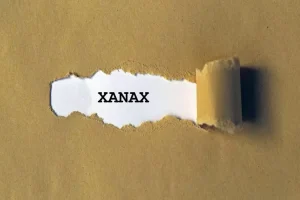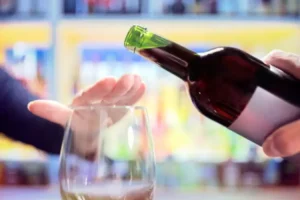Alcohol and Substance Abuse in PTSD Veterans Affairs

Because blackouts tend to occur at high BACs, they commonly stem from binge drinking, defined as a pattern of drinking that increases a person’s BAC to 0.08 percent or higher. This typically occurs after 4 drinks for women and 5 drinks for men—in about https://ecosoberhouse.com/ 2 hours. In fact, many people who have blackouts do so after engaging in a behavior known as high-intensity drinking, which is defined as drinking at levels that are at least twice as high as the binge-drinking thresholds for women and men.
PTSD Memory Loss: The Link Between Trauma and Blackouts
Specifically within college students, individuals drank more on days characterized by higher anxiety, and students were more likely to drink to cope on days when they experienced sadness. Further, drinking to cope has been shown to moderate the relationship between anxiety and alcohol consumption (O’Hara, Armell, & Tennen, 2014). Other research has linked emotion dysregulation to alcohol-related consequences (Dvorak et al., 2014; Magar, Phillips, & Hosie, 2008). Second, we used these residual scores as predictors in the analytic models. Each model included the 1-day lagged residual for the outcome (i.e., autoregressive effect). The model for conduct problems and alcohol dependence syndrome included the 1-day lagged residual PTSS score and the concurrent drinking residual score.
Meetings and Events
Interpersonal conflict, assault, and sexual risk behavior all occur at increased rates among people characterized by greater disinhibition (Hahn, Simons, & Simons, 2016; Leone, Crane, Parrott, & Eckhardt, 2016; Veith, Russell, & King, 2017). In the HiTOP model, the externalizing disinhibition dimension has links to both substance use disorder and disorders of conduct (e.g., antisocial personality disorder, conduct disorder; Kotov et al., 2017). A complementary perspective emphasizes the predominance of associative processes and heightened reactivity to stimuli (Carver, Johnson, & Timpano, 2017; Lieberman, 2007). Alcohol intoxication is also theorized to increase maladaptive behavioral responses by narrowing cognitive processing to salient cues, contributing to greater reactivity to the immediate environment (Steele & Josephs, 1990). Similarly, extreme emotion can result in reductions of deliberate control and increases in reflexive responding (Jones et al., 2013; Lieberman, 2007; Tomko et al., 2015).

AUD and PTSD Symptom Clusters
- Whether it’s connecting you with the right therapist or supporting you through difficult times, we embrace you as part of our community.
- Symptoms of PTSD usually begin within 3 months of the traumatic event, but they sometimes emerge later.
- A blackout ends when your body has absorbed the alcohol you consumed and your brain is able to make memories again.
- Since the late 1970s, several U.S. surveys have collected information on mental health conditions, including AUD, SUD, and PTSD.
Such variation makes these analyses less amenable to examine systematic change over time in respect to improvement or worsening of symptoms in the sample as a whole. Finally, although the analytic models address temporal relationships, they do not provide a basis for causal inference. In addition, findings showed evidence of a bi-directional association consistent with a mutual ptsd alcohol blackout maintenance model (Kaysen et al., 2011; Read et al., 2013). Dysregulation in affect (lability) and behavior (disinhibition) at baseline were hypothesized to be vulnerability factors. In this regard, lability and disinhibition were expected to predict higher initial levels and growth of dependence syndrome symptoms and conduct problems, respectively, over the follow-up period.
- Studies have shown that young adults under the age of 25 are particularly vulnerable to experiencing blackouts.
- Because blackouts tend to occur at high BACs, they commonly stem from binge drinking, defined as a pattern of drinking that increases a person’s BAC to 0.08 percent or higher.
- The most common type is called a “fragmentary blackout” and is characterized by spotty memories for events, with “islands” of memories separated by missing periods of time in between.
- In addition, findings showed evidence of a bi-directional association consistent with a mutual maintenance model (Kaysen et al., 2011; Read et al., 2013).
The medical term for blackouts is called transient loss of consciousness (TLOC). Blackouts involve complete memory loss caused by your brain’s inability to record new memories for a period of time due to the effects of excessive alcohol, substance misuse or some other condition. During a blackout, the mind is not functioning properly because the brain is not functioning properly. The fundamental mental dysfunction is that short-term memory is no longer being uploaded into longer-term memory.

- The autoregressive parameter indicates the extent to which deviations from the individual’s expected value at time t-1 (i.e., yesterday) predict subsequent behavior at time t (today).
- That’s because alcohol can block the transference of memories into long-term storage.
- People seeking co-occurring PTSD and alcoholism treatment need to work with treatment professionals experienced in PTSD and alcohol treatment.
- From my discussions with people who have experienced blackouts, the amnesia has nearly instantaneous onset and ending.
- Therapies that focus on increasing awareness of dissociative tendencies and developing skills to remain grounded in the present moment can be particularly helpful in managing and reducing the frequency of blackouts.
Blackout Drunk: Signs, Causes, and Dangers of Blackout Drinking

Alcoholism Resources

